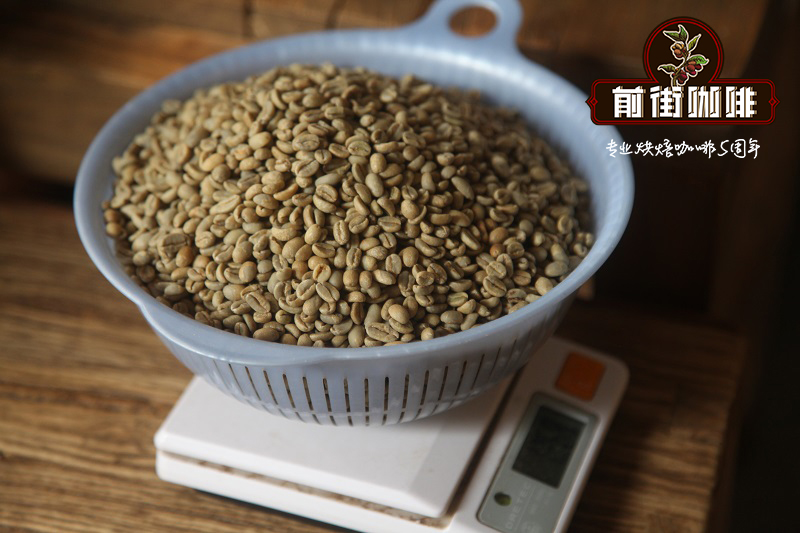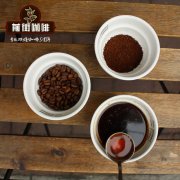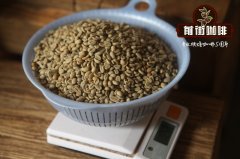Peru Coffee-LAS ORQUIDEAS Farm [Kaddura Variety] Coffee Bean planting Information introduction

Professional coffee knowledge exchange more coffee bean information please follow the coffee workshop (Wechat official account cafe_style)
Peruvian Coffee-LAS ORQUIDEAS Farm [Kaddura] Coffee Bean cultivation Information? What's the flavor of Peruvian coffee beans?
FarmLasOru í deas is located in the Triunfo district, belonging to the Jalca Grande district-Chachapoyas province-Amazon region, two and a half hours from Rodriguez de Mendoza, at an altitude of 1950 masl. It has a total area of 15 hectares, of which 4 hectares are dedicated to growing coffee.
In 2012, Mr Tito Huaman Hall won by finding suitable land to grow coffee. This is how his estate, LasOrqu í deas, was implemented in the same year, and so far, the owners have managed to produce one of the best coffees in the area.
Orqui í deas means "orchid" in Spanish.
Region: AMAZONAS
Harvest year: 2017
Harvest month: may to July.
Farm name: LAS ORQUIDEAS
Altitude: 1950 masl.
Coffee mill type: wash.
Blooming: from May to July
Soil type: clay
Air temperature / mean temperature: 17 °
Average rainfall: 2500 mm
Type of lampshade: LEGUMES
Shadow density: 15%
Plant and animal types exist: orchids, SAMCAPILLA,GALLITO DE LAS ROCAS,LOROS.
Fertilization method: organic fertilizer
Environmental protection measures:
Processing type: washing
Fermentation type: 12 to 18 hours.
Variety Caturra
Certified organic
Coffee was introduced to Peru in the middle of the 18th century through neighboring Ecuador [I], but there was no commercial export until the late 19th century. Production rose significantly after only 20 years, when Peru defaulted on a loan to the British government and saw more than 2 million hectares of land transferred to the United Kingdom (in the name of the "Peruvian country") as repayment. 1/4 of this is spent on agricultural production, including coffee, at a time when export trade is seriously starting.
Throughout Latin America, the early stage of Peruvian coffee production was characterized by the concentration of large amounts of land in the hands of wealthy (mainly European) elites; however, when workers migrated from other parts of Peru (such as the highlands) to these farms to provide labour, they began to open their own shops-quite easy because of the abundance of land.
In the postwar era, with the departure of British companies, these small-scale "peasant" producers still existed. This trend was consolidated in the 1950s and 1960s as the Peruvian Government engaged in land reform and encouraged coffee cultivation as part of a series of socio-economic development measures; this crop, which is well suited to small-scale farmers, has led to a change in the demographics of coffee production in the country, where small-scale indigenous farmers are now responsible for most of the country's production. The early military dictatorship further supported this image through the producers of some cooperative countries from the middle to the 20th century-one of the only potentially positive legacies of this era. Between 1970 and 1980, under the quota system of international coffee agreements, profits were successfully transferred to state-supported coffee cooperatives, which were responsible for exporting 80 per cent of their products in the 1970s [ii]. Of course, most of the profits are pooled into government coffers, and while supporting cooperatives, this also contributes to complacency, during which there are few operational improvements [iii].
Fujimori's structural adjustment policies in the 1980s further undermined autonomy and capacity-building, and after the outbreak of the economic crisis, the rise of the Shining path and the ensuing violence had a considerable impact on coffee cultivation (virtually all agriculture). There is a large amount of capital and labour investment in coffee production and the migration of many farmers from rural areas to a relatively safer urban environment has led to the collapse of trade networks (already fragile).
The shift to "moral" coffee in the mid-to-late 1990s was largely reversed [iv]. Despite its historically low prices, the Umoja network gives priority to trading fairly, eco-friendly coffee, fuelling the Peruvian coffee boom. In fact, the area under coffee cultivation increased from 163000 hectares in 1995 to 215000 hectares in 2005. Apart from Brazil, this makes Peru the only Latin American country to ignore the decline in production during a period of historically low prices [vi]. Special imports (including certified coffee) began in 1997 and gradually increased, contributing to Peru's current status as the world's seventh largest producer. However, exports fell by more than 40% (production fell by more than 30%) from 2013 to 14 and 2014 to 15, largely due to the impact of coffee leaf rust, which has a big impact in the country. Coffee is grown without pesticides or fungicides. Peru is currently the world's largest exporter of organic coffee, with an organic certification of about 90000 hectares. This is mainly due to the lack of chemical investment resources from smaller producers; however, after the coffee leaf rust crisis, it is difficult to say how long this will be [vii].
Today, about 223000 Peruvian families have committed to about 425000 hectares of coffee production, and more than 300000 people are somehow dependent on the coffee industry [viii]. Production is still concentrated in the Cajamarca region in the north of the country, where half of the country's coffee is grown. More than 70% of them are Typica, followed by Caturra (20%), others (10%), and so are other varieties [ix]. Coffee is also produced in other areas, such as Cusco and Yunin in the south.
As mentioned earlier, Peru's production today is very small, with an average farm area of less than 3 hectares. With this structure, these problems are usually related to small-scale producers in Latin America, such as difficulties in obtaining credit and inefficient management of production and processing [x]. Cooperatives help producers reduce risk and provide the resources necessary for harvesting. Currently, most coffee in Peru is collected from small farms and then mass produced together before grinding and marketing through these cooperatives, the largest of which represents 2000 farmers and 7000 hectares. However, while many of these cooperatives attach great importance to improving processing, productive input remains a blind spot. Although this situation is changing, the slow progress of attention to production and quality, coupled with the lack of existing infrastructure (processing and transport), has tarnished Peru's reputation.
Nevertheless, of the 28 microclimates cited [xi], 1/4 of Peruvian coffee is grown between 1200 and 2000 metres, so it is likely to improve the regional character of coffee, develop greater traceability and identify small, special producers, and Mercanta is currently working.
Do you recommend making Peruvian coffee in front of the street?
Filter cup: Hario V60
Water temperature: 88 degrees
Degree of grinding: small Fuji degree of grinding 4
Cooking methods: the ratio of water to powder is 1:15, 15g powder, the first injection of 25g water, 25 s steaming, the second injection to 120g water cut off, waiting for the powder bed water to half and then water injection, slow water injection until 225g water, extraction time about 2:00
Analysis: using three-stage brewing to clarify the flavor of the front, middle and back of the coffee.
Important Notice :
前街咖啡 FrontStreet Coffee has moved to new addredd:
FrontStreet Coffee Address: 315,Donghua East Road,GuangZhou
Tel:020 38364473
- Prev

Peruvian Coffee-El Cerro Coffee Farm [Kaddura] what is the flavor and characteristics of coffee beans? Peru E
Professional coffee knowledge exchange more coffee bean information please follow coffee workshop (Wechat official account cafe_style) Peruvian Coffee-El Cerro Coffee Farmer
- Next

Brief introduction of single-origin coffee beans in Peru-[Kaddura] of Agmer Colorado Coffee Farm
Professional coffee knowledge exchange more coffee bean information please follow the coffee workshop (Wechat official account cafe_style) Peru single-origin coffee beans introduction-Agmer Colorado Coffee Farm [Kaddura] flavor and taste? Produced by GilmerCrdova of Agmer Colorado Farm from red and yellow Caturra varieties of Arabica trees. This coffee is at 2017.
Related
- Detailed explanation of Jadeite planting Land in Panamanian Jadeite Manor introduction to the grading system of Jadeite competitive bidding, Red bid, Green bid and Rose Summer
- Story of Coffee planting in Brenka region of Costa Rica Stonehenge Manor anaerobic heavy honey treatment of flavor mouth
- What's on the barrel of Blue Mountain Coffee beans?
- Can American coffee also pull flowers? How to use hot American style to pull out a good-looking pattern?
- Can you make a cold extract with coffee beans? What is the right proportion for cold-extracted coffee formula?
- Indonesian PWN Gold Mandrine Coffee Origin Features Flavor How to Chong? Mandolin coffee is American.
- A brief introduction to the flavor characteristics of Brazilian yellow bourbon coffee beans
- What is the effect of different water quality on the flavor of cold-extracted coffee? What kind of water is best for brewing coffee?
- Why do you think of Rose Summer whenever you mention Panamanian coffee?
- Introduction to the characteristics of authentic blue mountain coffee bean producing areas? What is the CIB Coffee Authority in Jamaica?

